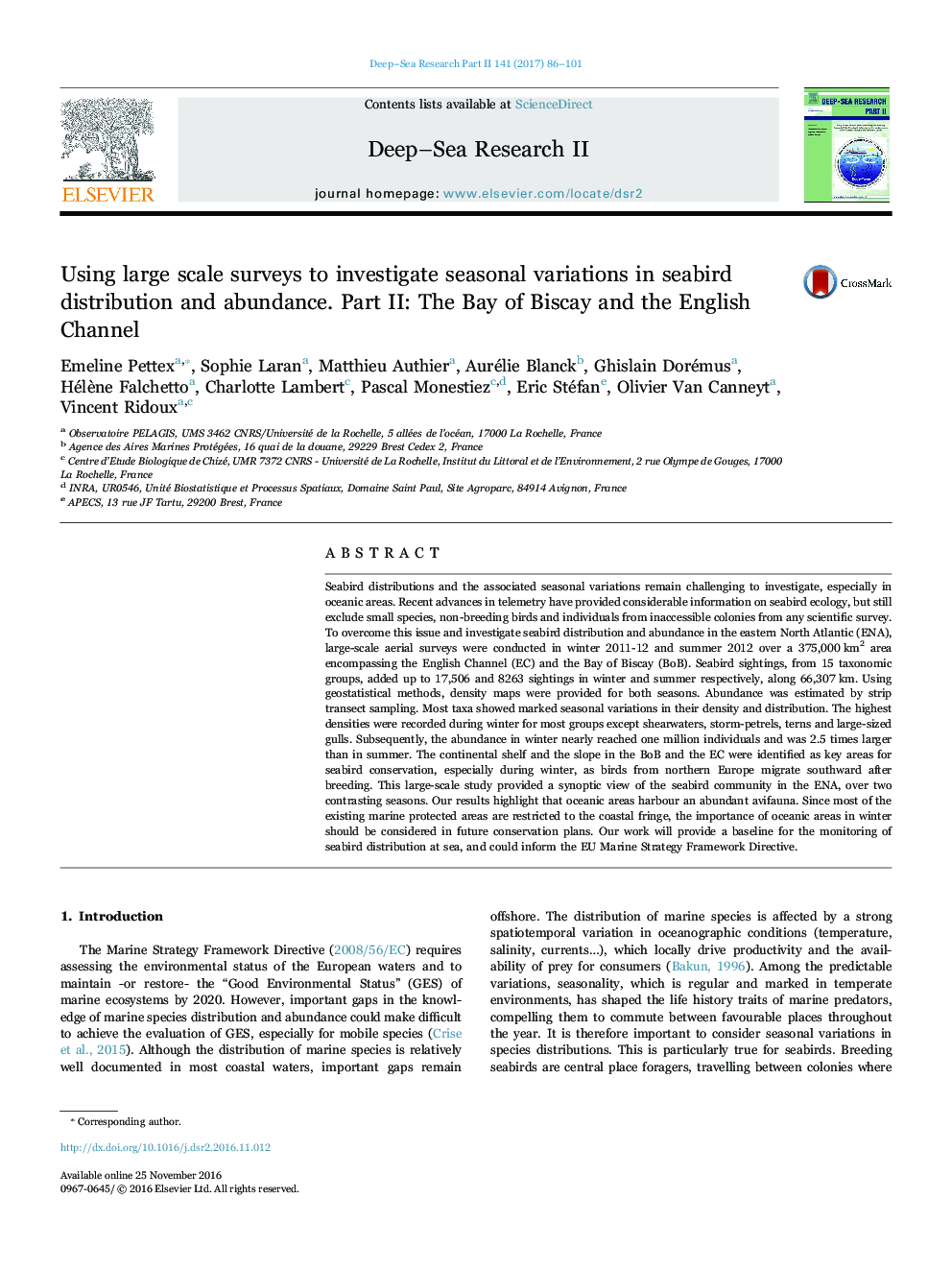| کد مقاله | کد نشریه | سال انتشار | مقاله انگلیسی | نسخه تمام متن |
|---|---|---|---|---|
| 5764923 | 1626401 | 2017 | 16 صفحه PDF | دانلود رایگان |
Seabird distributions and the associated seasonal variations remain challenging to investigate, especially in oceanic areas. Recent advances in telemetry have provided considerable information on seabird ecology, but still exclude small species, non-breeding birds and individuals from inaccessible colonies from any scientific survey. To overcome this issue and investigate seabird distribution and abundance in the eastern North Atlantic (ENA), large-scale aerial surveys were conducted in winter 2011-12 and summer 2012 over a 375,000Â km2 area encompassing the English Channel (EC) and the Bay of Biscay (BoB). Seabird sightings, from 15 taxonomic groups, added up to 17,506 and 8263 sightings in winter and summer respectively, along 66,307Â km. Using geostatistical methods, density maps were provided for both seasons. Abundance was estimated by strip transect sampling. Most taxa showed marked seasonal variations in their density and distribution. The highest densities were recorded during winter for most groups except shearwaters, storm-petrels, terns and large-sized gulls. Subsequently, the abundance in winter nearly reached one million individuals and was 2.5 times larger than in summer. The continental shelf and the slope in the BoB and the EC were identified as key areas for seabird conservation, especially during winter, as birds from northern Europe migrate southward after breeding. This large-scale study provided a synoptic view of the seabird community in the ENA, over two contrasting seasons. Our results highlight that oceanic areas harbour an abundant avifauna. Since most of the existing marine protected areas are restricted to the coastal fringe, the importance of oceanic areas in winter should be considered in future conservation plans. Our work will provide a baseline for the monitoring of seabird distribution at sea, and could inform the EU Marine Strategy Framework Directive.
Journal: Deep Sea Research Part II: Topical Studies in Oceanography - Volume 141, July 2017, Pages 86-101
